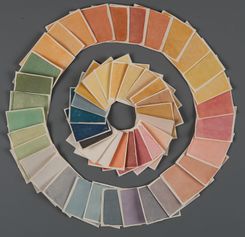Ukiyo-e Print Colorant Database

PLEASE NOTE:: This database is still in a DRAFT state. We are in the process of adding and correcting information
Since 2002, the MFA’s Asian Conservation Studio and Scientific Research Laboratory has been conducting research into the colorants used in Japanese woodblock prints, or ukiyo-e prints from the Edo period (1603–1868). Non-invasive techniques that do not require sampling from the prints have been used: X-ray Fluorescence (XRF), Excitation Emission Matrix (EEM) and Fiber Optic Reflectance (FORS) spectroscopies.
This Ukiyo-e Print Colorant Database is an effort to begin collating the analytical results of colorants into one location that is accessible to all researchers. It currently focuses on prints from the MFA’s collection from the early 1700s to the mid-1800s. It does not yet cover the whole breadth of colorants used, such as the aniline-based colorants, but we plan to continue to expand the database. Thus far, over 800 prints have been analyzed and the uploading of data is ongoing. |} --> -->
Bibliography
A list of publications and resources on the identification of colorants in Japanese woodblock prints.
About the Collection
The MFA has over 50,000 Japanese prints and approximately 3,000 titles of illustrated books covering the Edo period (1603–1868) to the present. The Japanese woodblock print collection spans the Edo period from its birth to color printing to its height as a commercial product and to its end in the Meiji period (1868–1912). This collection represents not only the breadth of artists working at the time but also multiple impressions and editions, making it a comprehensive resource for scholarship, research, and teaching. Collections from prominent Bostonians such as William Sturgis Bigelow, Denman Ross, and the Spaulding brothers at the turn of the century form the basis of the collection. Furthermore, the William S. and John T. Spaulding Collection, which is comprised of over 6,000 prints, is available to researchers and educators as an important study collection. Because the Spaulding Collection is not exhibited, these prints generally display remarkable preservation of the colorants making it a valuable benchmark for the study of color and palette.
Acknowledgement
The colorant research comes out of a long collaboration between the Asian Conservation Studio and Scientific Research Laboratory. We would like to thank the many volunteers who contributed to this research. We are also grateful to Richard and JoAnn Pinkowitz for donating to this database project which allowed us to bring the Ukiyo-e Print Colorant Database online.
